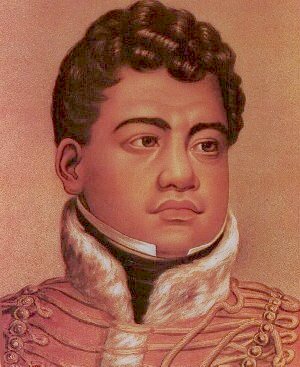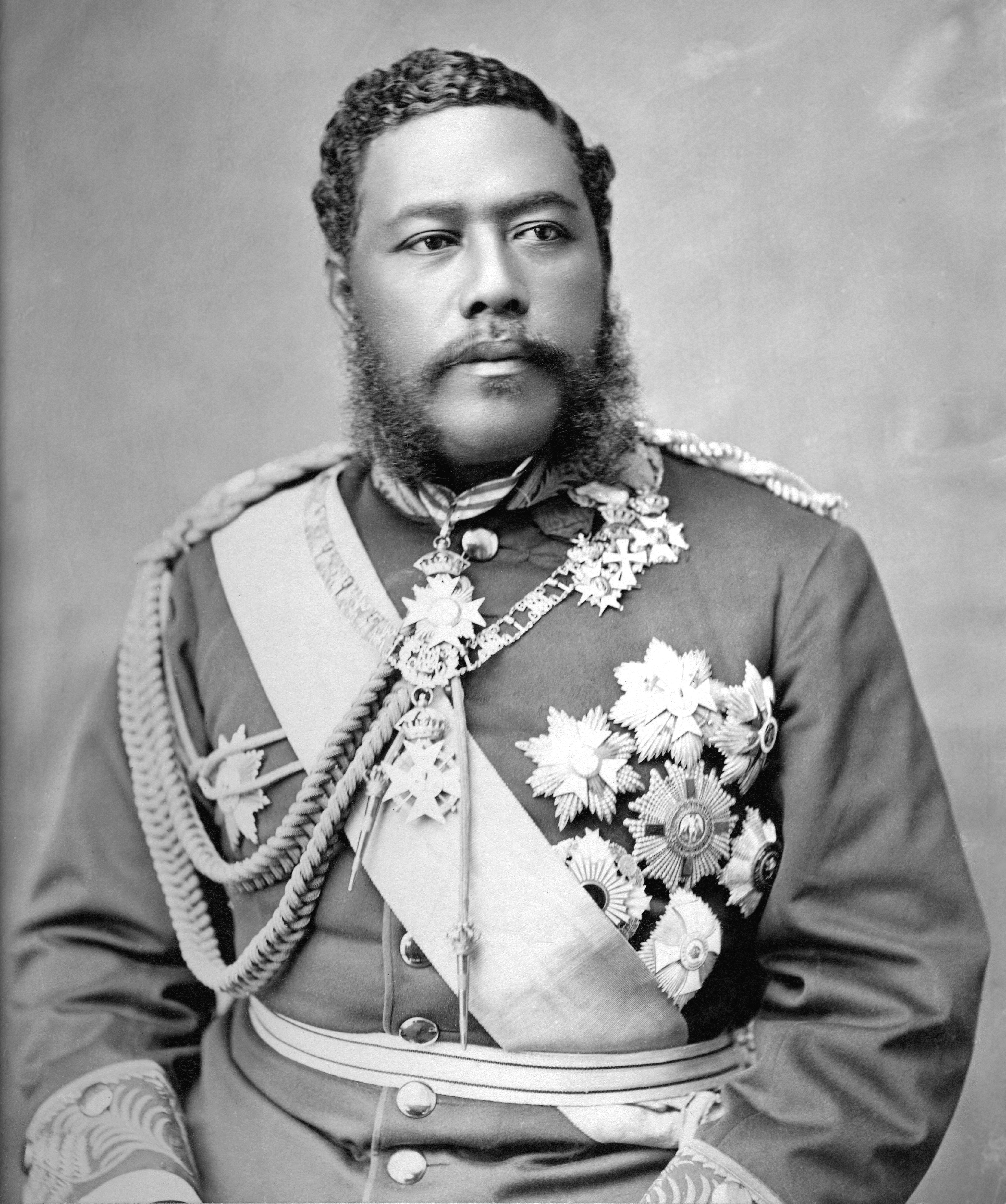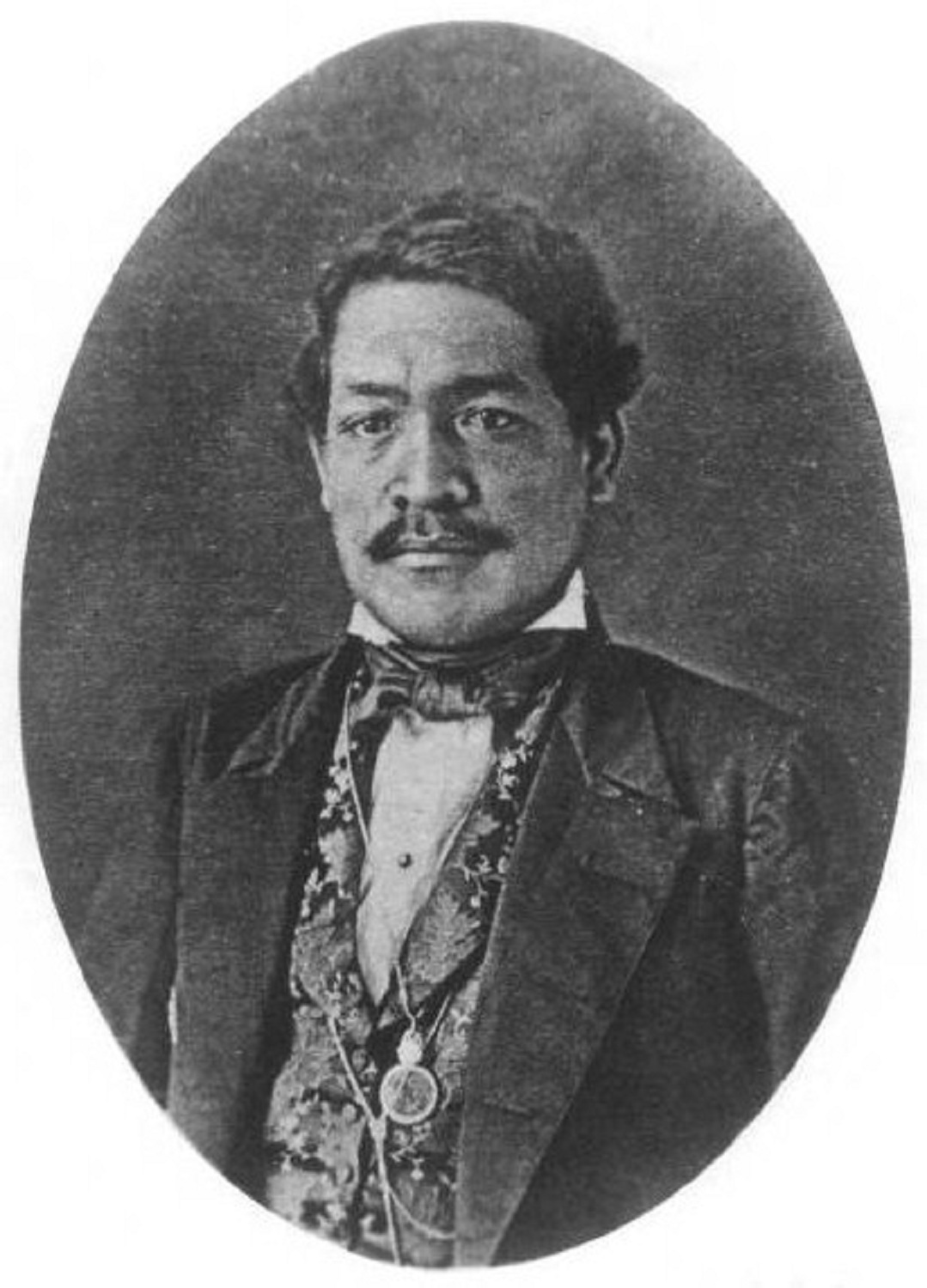|
Great Māhele
The Great Māhele ("to divide or portion") or just the Māhele was the Hawaiian land redistribution proposed by King Kamehameha III. The Māhele was one of the most important episodes of Hawaiian history, second only to the overthrow of the Hawaiian Kingdom. While intended to provide secure title to indigenous Hawaiians, it separated many of them from their land. Bill of Rights The 1839 Hawaiian Bill of Rights, also known as the 1840 Constitution of the Kingdom of Hawaii, was an attempt by Kamehameha III and his chiefs to guarantee that the Hawaiian people would not lose their tenured land, and provided the groundwork for a free enterprise system. The document, which had an attached code of laws, was drafted by Lahainaluna missionary school alumnus Boaz Mahune, revised by the Council of Chiefs and by Kamehameha III in June 1839. 1840 Constitution of the Kingdom of Hawaii The 1840 Constitution of the Kingdom of Hawaii established a constitutional monarchy. It stated that ... [...More Info...] [...Related Items...] OR: [Wikipedia] [Google] [Baidu] |
Hawaiian Islands
The Hawaiian Islands () are an archipelago of eight major volcanic islands, several atolls, and numerous smaller islets in the Pacific Ocean, North Pacific Ocean, extending some from the Hawaii (island), island of Hawaii in the south to northernmost Kure Atoll. Formerly called the Sandwich Islands by Europeans, the present name for the archipelago is derived from the name of its largest island, Hawaii. The archipelago sits on the Pacific Plate. The islands are exposed peaks of a great undersea mountain range known as the Hawaiian–Emperor seamount chain, formed by volcano, volcanic activity over the Hawaiian hotspot. The islands are about from the nearest continent and are part of the Polynesia subregion of Oceania. The U.S. state of Hawaii occupies the archipelago almost in its entirety (including the mostly uninhabited Northwestern Hawaiian Islands), with the sole exception of Midway Atoll (a United States Minor Outlying Island). Hawaii is the only U.S. state that is sit ... [...More Info...] [...Related Items...] OR: [Wikipedia] [Google] [Baidu] |
Kamehameha V
Kamehameha V (Lota Kapuāiwa Kalanimakua Aliʻiōlani Kalanikupuapaʻīkalaninui; December 11, 1830 – December 11, 1872), reigned as the fifth monarch of the Kingdom of Hawaiʻi from 1863 to 1872. His motto was "Onipaʻa": immovable, firm, steadfast, or determined; he is said to have worked diligently for his people and kingdom, being described as the last great traditional chief. Early life He was born and given the name Lot Kapuāiwa December 11, 1830. His mother was Elizabeth Kīnaʻu and father was Mataio Kekūanaōʻa. His siblings included David Kamehameha, Moses Kekūāiwa, Alexander Liholiho, and Victoria Kamāmalu. He also was a grandson of Kamehameha I. ''Kapu āiwa'' means mysterious kapu or sacred one protected by supernatural powers. He was adopted using the ancient Hawaiian tradition called ''hānai'' by Princess Nāhiʻenaʻena, but she died in 1836. He was then adopted by his grandmother Queen Kalākua Kaheiheimālie and step-grandfather High Chief ... [...More Info...] [...Related Items...] OR: [Wikipedia] [Google] [Baidu] |
1848 In Hawaii
1848 is historically famous for the wave of revolutions, a series of widespread struggles for more liberal governments, which broke out from Brazil to Hungary; although most failed in their immediate aims, they significantly altered the political and philosophical landscape and had major ramifications throughout the rest of the century. Ereignisblatt aus den revolutionären Märztagen 18.-19. März 1848 mit einer Barrikadenszene aus der Breiten Strasse, Berlin 01.jpg, Cheering revolutionaries in Berlin, on March 19, 1848, with the new flag of Germany Lar9 philippo 001z.jpg, French Revolution of 1848: Republican riots force King Louis-Philippe to abdicate Zeitgenössige Lithografie der Nationalversammlung in der Paulskirche.jpg, German National Assembly's meeting in St. Paul's Church Pákozdi csata.jpg, Battle of Pákozd in the Hungarian Revolution of 1848 Events January–March * January 3 – Joseph Jenkins Roberts is sworn in as the first president of the indepe ... [...More Info...] [...Related Items...] OR: [Wikipedia] [Google] [Baidu] |
Indigenous Land Rights In Hawaii
Indigenous may refer to: *Indigenous peoples *Indigenous (ecology), presence in a region as the result of only natural processes, with no human intervention *Indigenous (band), an American blues-rock band *Indigenous (horse), a Hong Kong racehorse * ''Indigenous'' (film), Australian, 2016 See also *Indigenous Australians *Indigenous language *Indigenous peoples in Canada *Indigenous religion *Missing and Murdered Indigenous Women Missing and Murdered Indigenous Women are instances of violence against Indigenous women in Canada and the United States, notably those in the First Nations in Canada and Native American communities, but also amongst other Indigenous peoples s ... * Native (other) * * {{disambiguation ... [...More Info...] [...Related Items...] OR: [Wikipedia] [Google] [Baidu] |
Hawaiian Kingdom
The Hawaiian Kingdom, also known as the Kingdom of Hawaiʻi ( Hawaiian: ɛ ɐwˈpuni həˈvɐjʔi, was an archipelagic country from 1795 to 1893, which eventually encompassed all of the inhabited Hawaiian Islands. It was established in 1795 when Kamehameha I, then Aliʻi nui of Hawaii, conquered the islands of Oʻahu, Maui, Molokaʻi, and Lānaʻi, and unified them under one government. In 1810, the Hawaiian Islands were fully unified when the islands of Kauaʻi and Niʻihau voluntarily joined the Hawaiian Kingdom. Two major dynastic families ruled the kingdom, the House of Kamehameha and the House of Kalākaua. The kingdom subsequently gained diplomatic recognition from European powers and the United States. An influx of European and American explorers, traders, and whalers soon began arriving to the kingdom, introducing diseases such as syphilis, tuberculosis, smallpox, and measles, leading to the rapid decline of the Native Hawaiian population. In 1887, King Kalā ... [...More Info...] [...Related Items...] OR: [Wikipedia] [Google] [Baidu] |
Native Hawaiians
Native Hawaiians (also known as Indigenous Hawaiians, Kānaka Maoli, Aboriginal Hawaiians, or simply Hawaiians; , , , and ) are the Indigenous Polynesian people of the Hawaiian Islands. Hawaiʻi was settled at least 800 years ago by Polynesians who sailed from the Society Islands. The settlers gradually became detached from their homeland and developed a distinct Hawaiian culture and identity in their new home. They created new religious and cultural structures, in response to their new circumstances and to pass knowledge from one generation to the next. Hence, the Hawaiian religion focuses on ways to live and relate to the land and instills a sense of community. The Hawaiian Kingdom was formed in 1795, when Kamehameha the Great, of the then-independent island of Hawaiʻi, conquered the independent islands of Oʻahu, Maui, Molokaʻi, and Lānaʻi to form the kingdom. In 1810, Kauaʻi and Niʻihau joined the Kingdom, the last inhabited islands to do so. The Kingdom recei ... [...More Info...] [...Related Items...] OR: [Wikipedia] [Google] [Baidu] |
Kuleana Rights
Kuleana rights are certain land use rights once enjoyed by Hawaiian tenant farmers and in the modern day are attached to particular plots of land. The six distinct kuleana rights are: (1) reasonable access to the land-locked ''kuleana'' from major thoroughfares; (2) agricultural uses, such as taro cultivation; (3) traditional gathering rights in and around the ''ahupua'a'' eighborhood (4) a house lot not larger than 1/4 acre; (5) sufficient water for drinking and irrigation from nearby streams, including traditionally established waterways such as auwai''; (6) fishing rights in the ''kunalu'' (the coastal region extending from beach to reef). A ''kuleana'' is the smallest portion of land in the traditional ahupuaʻa system of land management and would be cultivated by a single tenant family on behalf of a regional chief. These rights were first acknowledged in statute as part of the Great Māhele of King Kamehameha III and the Kuleana Act of 1850 and continue to be prote ... [...More Info...] [...Related Items...] OR: [Wikipedia] [Google] [Baidu] |
Hawaiian Home Land
A Hawaiian home land is an area held in trust for Native Hawaiians by the state of Hawaii under the Hawaiian Homes Commission Act of 1920. History Upon the 1893 overthrow of the Hawaiian Kingdom, the idea for "Hawaiian Homelands" was first born. In his testimony before Congress regarding the Hawaiian Islands on January 3, 1894, William Alexander reported: President Dole f the Republic of Hawaiiand his colleagues have elaborated a plan for giving the Kanakas Homestead principle">homesteads out of the Crown lands, not transferable, and further this condition of occupation. In 1921, the federal government of the United States set aside approximately in the Territory of Hawaii as a land trust for Homestead Act, homesteading by Native Hawaiians. The law mandating this, passed by the U.S. Congress on July 9, 1921, was called the "Hawaiian Homes Commission Act" (HHCA) and, with amendments, is still in effect today. The act is often also attributed to the year 1920, when it was wr ... [...More Info...] [...Related Items...] OR: [Wikipedia] [Google] [Baidu] |
Proposed 1893 Constitution Of The Hawaiian Kingdom
The proposed 1893 Constitution of the Hawaiian Kingdom would have been a replacement of the Constitution of 1887, primarily based on the Constitution of 1864 put forth by Queen Liliʻuokalani. While it never became anything more than a draft, the constitution had a profound impact on Hawaiʻi's history: it set off a chain of events that eventually resulted in the overthrow of the Hawaiian Kingdom. Background Prior to 1887, the monarchs of Hawaiʻi ruled the kingdom as executive monarchs. Following the writing of the 1887 Constitution, however, the monarch was reduced to a mere figurehead. During the 1890 legislature, the Hawaiian king, Kalākaua, backed a number of proposals to amend or rewrite the 1887 constitution. However, all of these measures failed. In 1891, Liliʻuokalani ascended the throne. In 1892, she backed measures in the kingdom's legislature to amend or rewrite the constitution. However, the measures failed as they had during the reign of her brother. Among the m ... [...More Info...] [...Related Items...] OR: [Wikipedia] [Google] [Baidu] |
1887 Constitution Of The Hawaiian Kingdom
The 1887 Constitution of the Hawaiian Kingdom was a legal document prepared by anti-monarchists to strip the absolute Hawaiian monarchy of much of its authority, initiating a transfer of power to a coalition of American, European and native Hawaiian people. It became known as the Bayonet Constitution for the rising by the armed militia which forced King Kalākaua to sign it or be deposed. Rebellion of 1887 On June 30, 1887, a meeting of residents including the armed militia of the Honolulu Rifles, a group of soldiers that were secretly the Hawaiian League's military arm, and politicians who were members of the Reform Party of the Hawaiian Kingdom, demanded from King Kalākaua the dismissal of his Cabinet, headed by Walter M. Gibson. Their concerns about Gibson stemmed from the fact that he supported the king's authority. The meeting was called to order by Sanford B. Dole (cousin of then 9-year-old James Dole) and chaired by Peter Cushman Jones, the president of the larg ... [...More Info...] [...Related Items...] OR: [Wikipedia] [Google] [Baidu] |
1864 Constitution Of The Hawaiian Kingdom
The 1864 Constitution of the Hawaiian Kingdom abrogated the 1852 constitution issued by King Kamehameha III. It dramatically changed the way Hawaii's government worked by increasing the power of the king and changing the way the kingdom's legislature worked. It was Hawaii's constitution from 1864 through 1887, during the reigns of kings Kamehameha V, Lunalilo, and Kalākaua. It was replaced by the 1887 constitution. Background Kamehameha V ascended the throne in 1863. He was a firm believer that the king should be the person firmly in control of Hawaii's government and was against certain aspects of the 1852 constitution. Kamehameha V (as well as his predecessor, Kamehameha IV) was often irritated by the controls on his power by the constitution. Thus, when Kamehameha V ascended the throne, he refused to take an oath to the 1852 constitution. Instead, he called for a constitutional convention. The Constitutional Convention For the convention, delegates were chosen by election. Th ... [...More Info...] [...Related Items...] OR: [Wikipedia] [Google] [Baidu] |
1852 Constitution Of The Hawaiian Kingdom
The 1852 Constitution of the Hawaiian Kingdom, written in both English and Hawaiian, was constructed by King Kamehameha III. The purpose of its construction was to not only revise, but add to the 1840 Constitution in great length. The new constitution created a more democratic government much like those of the United States and Europe. King Kamehameha III The writer of the Hawaiian Constitution of 1852 was Kauikeaouli, referred to by the Hawaiian public as King Kamehameha III. He was the successor of Liholiho, King Kamehameha II. Kauikeaouli was the brother of Liholio and son of Kamehameha I. Kauikeaouli took over the throne at age eleven under the "regency" of his mother Ka'ahumanu. Kauikeaouli enacted the first constitution of Hawaii in 1840 which created a more western-like government with a two-body legislature. This was later revised in 1852. King Kamehameha III was the first Hawaiian monarch to rule as a "constitutional monarch" rather than an absolute monarch like his prede ... [...More Info...] [...Related Items...] OR: [Wikipedia] [Google] [Baidu] |




